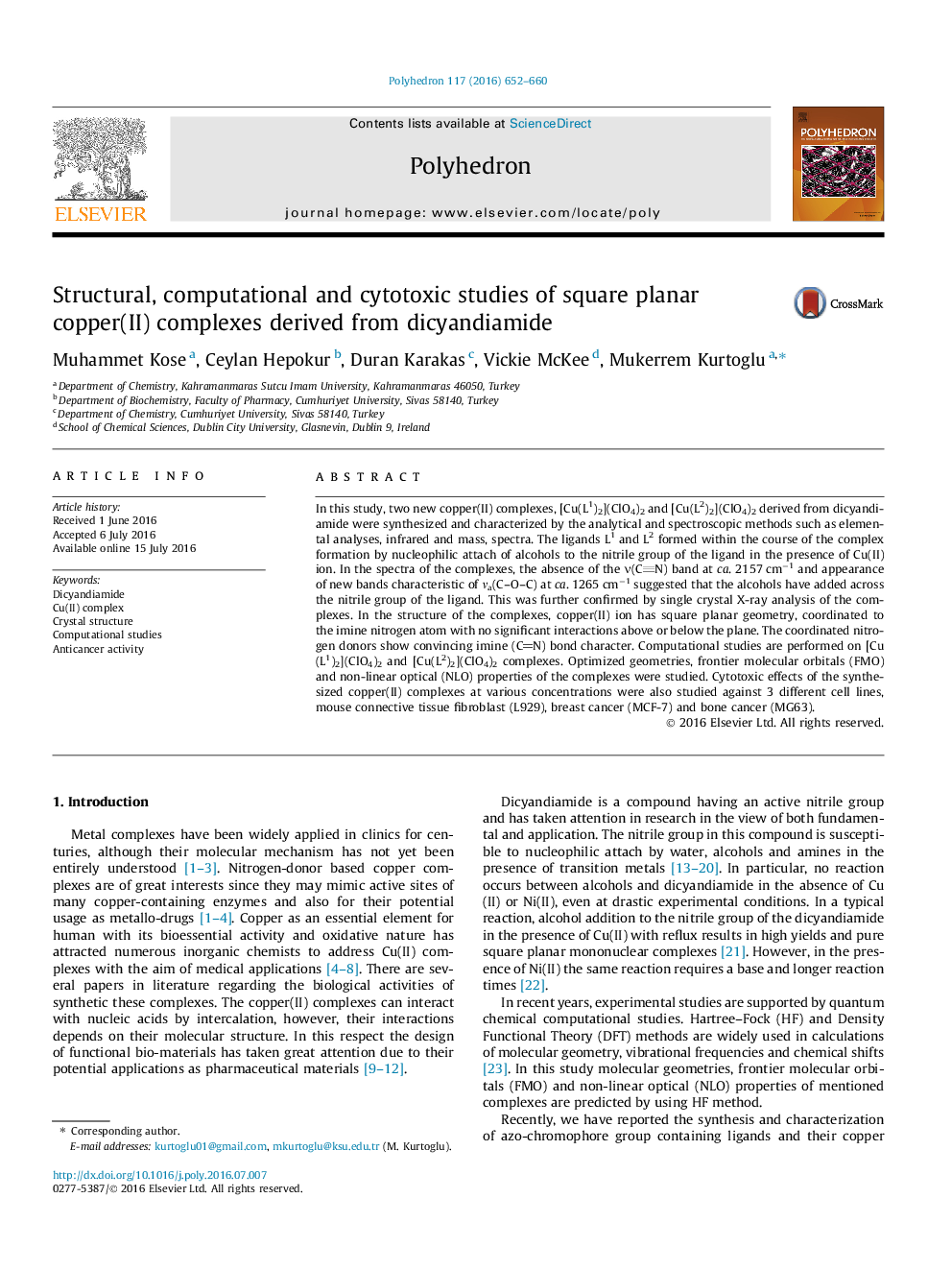| Article ID | Journal | Published Year | Pages | File Type |
|---|---|---|---|---|
| 1336252 | Polyhedron | 2016 | 9 Pages |
In this study, two new copper(II) complexes, [Cu(L1)2](ClO4)2 and [Cu(L2)2](ClO4)2 derived from dicyandiamide were synthesized and characterized by the analytical and spectroscopic methods such as elemental analyses, infrared and mass, spectra. The ligands L1 and L2 formed within the course of the complex formation by nucleophilic attach of alcohols to the nitrile group of the ligand in the presence of Cu(II) ion. In the spectra of the complexes, the absence of the ν(CN) band at ca. 2157 cm−1 and appearance of new bands characteristic of νa(C–O–C) at ca. 1265 cm−1 suggested that the alcohols have added across the nitrile group of the ligand. This was further confirmed by single crystal X-ray analysis of the complexes. In the structure of the complexes, copper(II) ion has square planar geometry, coordinated to the imine nitrogen atom with no significant interactions above or below the plane. The coordinated nitrogen donors show convincing imine (CN) bond character. Computational studies are performed on [Cu(L1)2](ClO4)2 and [Cu(L2)2](ClO4)2 complexes. Optimized geometries, frontier molecular orbitals (FMO) and non-linear optical (NLO) properties of the complexes were studied. Cytotoxic effects of the synthesized copper(II) complexes at various concentrations were also studied against 3 different cell lines, mouse connective tissue fibroblast (L929), breast cancer (MCF-7) and bone cancer (MG63).
Graphical abstractAnticancer properties of two structurally characterized copper(II) complexes derived from dicyandiamide were evaluated.Figure optionsDownload full-size imageDownload as PowerPoint slide
